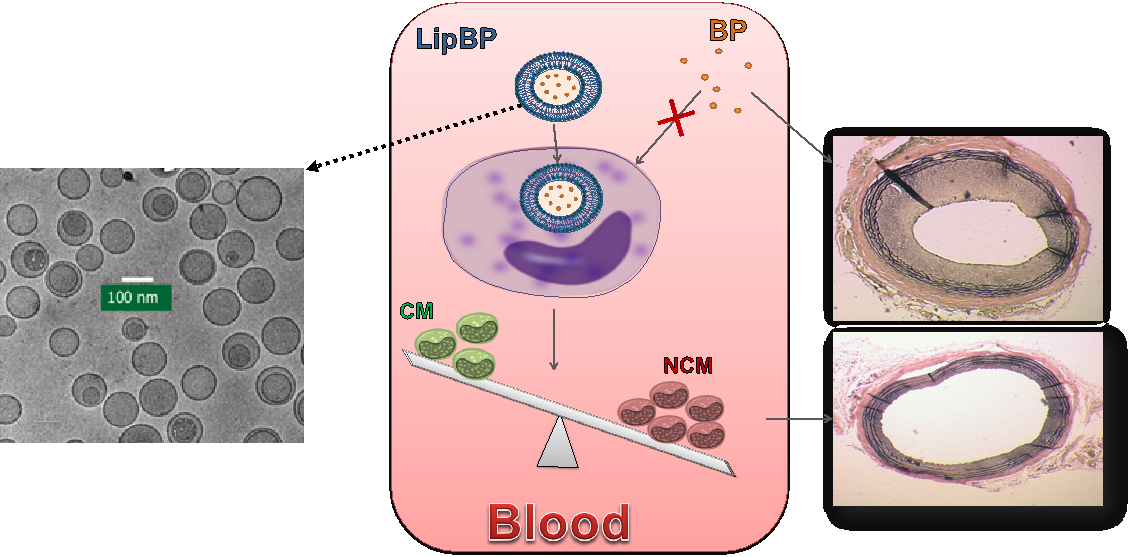Immunomodulation in cardiovascular injury
Restenosis is re-obstruction of the artery following percutaneous coronary angioplasty. Currently, restenosis is treated by local delivery from drug eluting stents. However, there are certain limitations in their use including late in-stent thrombosis. We hypothesized that partial and transient depletion of circulating monocytes could decrease macrophage recruitment in the arterial wall, and consequently result in attenuation of neointimal formation. Monocyte inhibition has been achieved with a systemic injection of nanoparticles (liposomes or polymeric) containing bisphosphonates (BPs). The nanoparticles encapsulating BPs controls the targeting of these bone-seeking agents, in clinical use for bone related disorders, to monocytes/macrophages capable of effective phagocytosis. The drug is protected in the circulation for a sufficient period of time to be taken up by monocytes, while still rapidly and sufficiently releasing the drug inside the cells for their inhibition, resulting in reduced ingress of monocytes to the injured artery. Inhibition of systemic monocytes/macrophages suppresses this inflammatory link. This work established that Inflammation has a major role in linking early vascular injury to restenosis, and is a major shift of restenosis paradigm, a presumed localized pathogenic process. A single injection of BP-containing nanoparticles at the time of angioplasty is capable of preventing restenosis, regardless of the procedure and the device(s) used. The use of a systemic treatment modality allows flexibility in choosing the type and number of stents to be deployed. Following successful Phase I & IIa clinical studies, the results of phase IIb are expected soon. In ongoing research, we explore of the role of pro- and anti-inflammatory monocyte sub-populations, classical monocytes (CM) and non-classical monocytes (NCM) in cardiovascular disorders.

Representative publications:
- H.D. Danenberg, I. Fishbein, J. Gao, J. Mönkkönen, R. Reich, I. Gati, E. Moerman, G. Golomb, Macrophage depletion by clodronate-containing liposomes reduce neointimal formation following balloon injury in rats and rabbits, Circulation, 106:599-605 (2002)
- H. Epstein, E. Afergan, T. Moise, Y. Richter, Y. Rudich, G. Golomb, Number-concentration of nanoparticles in liposomal and polymeric multiparticulate preparations: Empirical and calculation methods, Biomaterials, 27:651-657 (2006)
- E. Cohen-Sela, O. Rosenzweig, J. Gao, H. Epstein, I. Gaty, R. Reich, H.D. Danenberg, G. Golomb, Alendronate-loaded nanoparticles deplete monocytes and attenuate restenosis, J. Control. Release.113:23-30 (2006)
- 122. E. Grad, K. Zolotarevsky, H.D. Danenberg, M.M. Nordling-David, D. Gutman and G. Golomb, The role of monocyte subpopulations in vascular injury following partial and transient depletion, Drug Deliv. Transl. Res., 8(4), 945-953 (2018)

